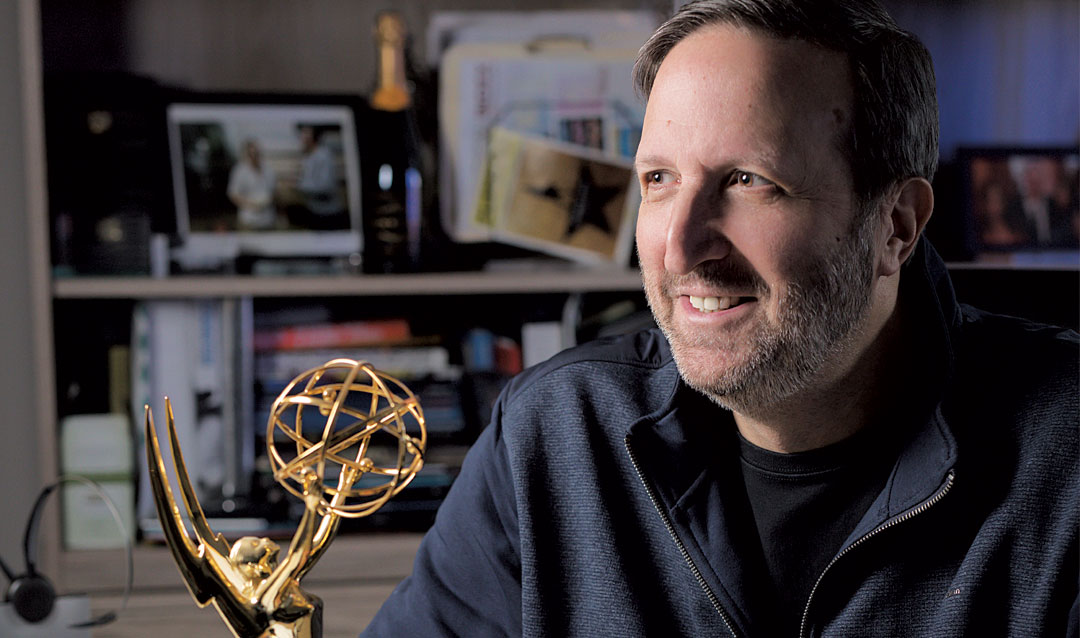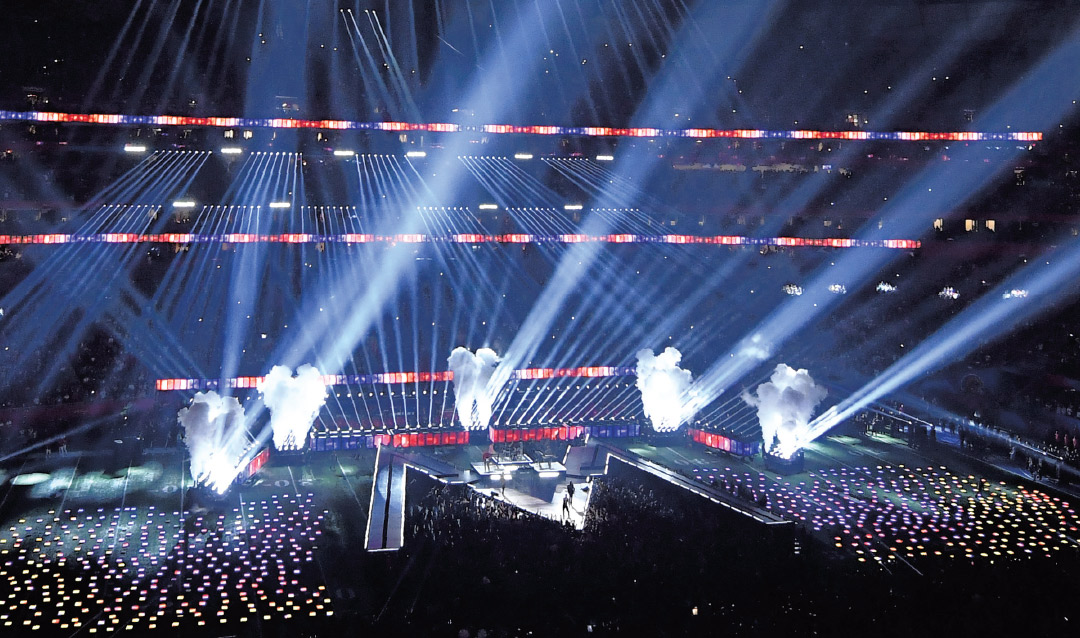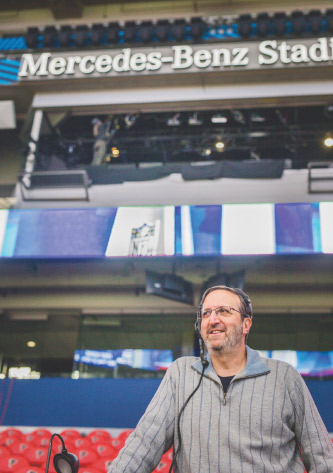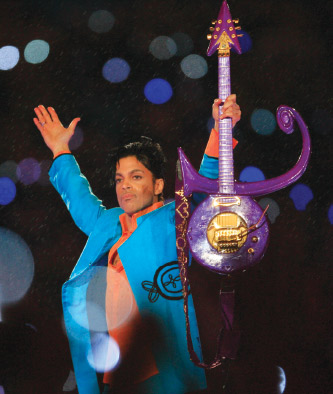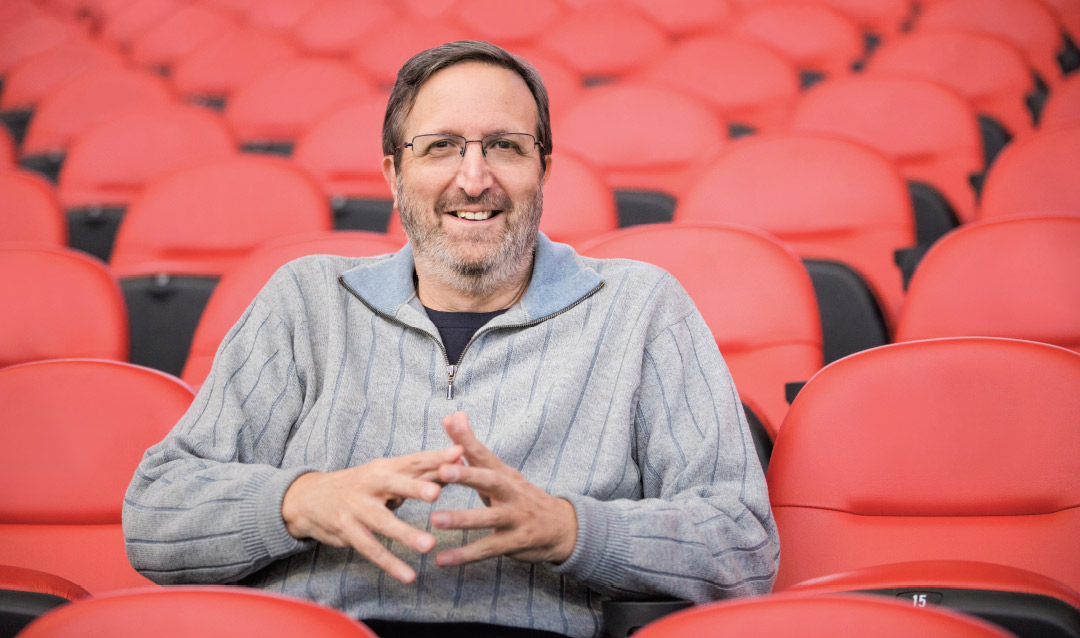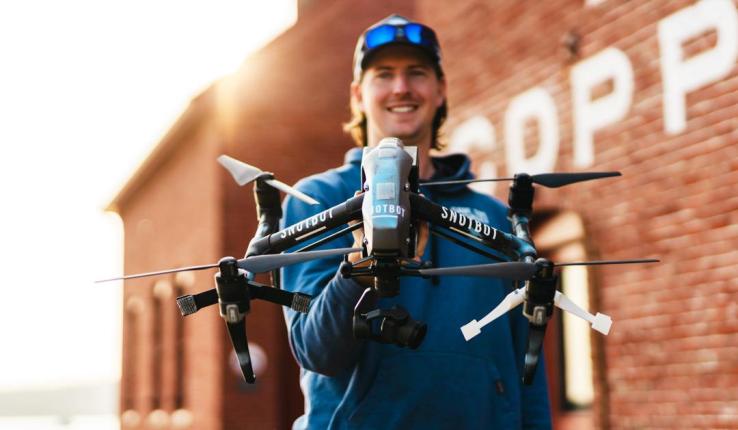In Atlanta, Kirshner and his team of professionals have offices in rows of plain, white trailers situated under a bridge on the Mercedes-Benz Stadium compound. Kirshner shares his space with Hamish Hamilton, the halftime show’s television director, and a few others.
“It’s not that glamorous,” jokes Kirshner, as his assistant, Chet Craft, shuttles him and two Lehigh communications staffers by golf cart to the halftime show’s staging area and video trailer. “We basically live under a bridge like bridge trolls.”
Kirshner arrived in Atlanta five days earlier, though he was traveling and planning for the event— down to the second, down to each detail—for about six months. Some team members arrived weeks earlier, in early January, to work out logistics and assemble parts of the stage, which was constructed in Los Angeles and transported by truck to the stadium.
Now, about 300 close team members are on site, and they meet each day for catered lunches and dinners under a huge tent. On this afternoon, the chefs serve up turkey ribs, brisket and chicken tortilla soup, salad and fixings, and desserts. Most of the team has worked on the halftime shows for years, and they sport signature jackets and vests from various shows.
“We’re all really good friends,” Kirshner says. “If you’re doing this with people you don’t like, you’re really having a miserable time. People who work for me, we’re all like family. We’re all friends. We’re all together on the road. We have dinner together. If something happens, we’re all there for each other.”
The staging area is a huge white tent, where a team is assembling the technology that will be part of the show, another team is attaching a drum set to a part of the stage, and yet another team in a curtained “war room” is figuring out the quickest way to assemble the stage on the field. At the far end of the tent is a black 1969 Cadillac that Big Boi will use for his “big” entrance. And when the on-field cast gathers here before the hours-long rehearsals, they’ll be able to grab sandwiches before heading to the stadium.
Some 400 people, many of whom return year after year to work the event, are going to run the stage sections onto the field. Another 1,500 people recruited from the Atlanta area are part of the show’s on-field cast, and they have already been rehearsing at a nearby location with choreographer and on-field cast director Kristen Patterson “KP” Terry.
The Grammy-winning group Maroon 5 is set to arrive tomorrow. Kirshner has been at the group’s rehearsals in a soundstage in Los Angeles, meeting many times with frontman Adam Levine and band members, as well as Travis Scott and Big Boi.
Using video footage from the various rehearsal locations, Kirshner and his team edit together an animation of the show to better assess how it will look on television. The animation helps them address camera angles and the like. “We don’t get that much time on the field, so we have to rehearse in our own way,” Kirshner says.
Back at the trailer, Hamilton reflects on working with Kirshner for the past decade at the Super Bowl. The team members come from all over the world (Hamilton is from Britain) and are together in what can be a “very stressful, very time-compressed” situation, he says. “And that team has to be led.” While Kirshner can be “a tough task-master,” he says, “he creates a really good atmosphere,” balancing the creative with the logistics.
Now it’s four days before the Super Bowl halftime show, and Hamilton joins Kirshner on the “M” stage for the first night of field rehearsals, and the two work with the artists on elements of the performances. After an hour, Kirshner climbs the stadium stands to the producer’s table for a bird’s-eye view of the show, which also features a gospel choir, drum lines and drones that spell out “One Love.”
At 6:15 p.m., the first of two run-throughs begins.
Maroon 5 takes to the stage with hits that include “Harder to Breathe,” “Girls Like You” and “Sugar.” Travis Scott, surrounded by fire, joins to perform “Sicko Mode.” Big Boi arrives in the Cadillac for “The Way You Move.” Not everything goes perfectly, but there will be two more nights of rehearsals.
It’s 9:31 p.m. when rehearsals end, and Kirshner heads next to a “creative” meeting.
Later, he dashes off an email to this writer. “Hope you had a good day,” Kirshner says. “Most importantly, I hope you see this is all about a team of hundreds of people, and tomorrow even more. Anyone who thinks they can do this without contributions from all these people is fooling themselves.”


